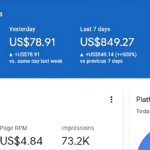We’ve all heard the phrase, “Storytelling is the new marketing” but the question is, do you know how to use storytelling in business? How can you tell a good story that engages your customers? The key is to create authentic stories that are targeted to your audience and use them in your marketing. This article will give you tips on how to use storytelling in business.
1. Why is storytelling important in business?
Storytelling is an important aspect of business for a few reasons. First, it is a way to connect with customers on an emotional level. When a customer can relate to a story, they are more likely to remember it and to feel a connection to the business. Second, storytelling is a great method to set your business out from competitors. By telling stories that are unique to your business, you can create a persona for your company that customers can remember and connect with. Finally, storytelling is a way to educate customers about your product or service. A well-told story can explain complex concepts in a way that is easy to understand, making customers more likely to buy from you.
2. How to know you need a story in a presentation
A story is a powerful way to capture an audience’s attention and make a presentation more memorable. There are a few ways to know if you need a story in your presentation: if you have trouble keeping your audience’s attention, if your presentation is missing something that would make it more interesting, or if you want to create a more lasting impression. A story is a perfect tool to combat these problems. It can help keep your audience engaged, make your presentation more entertaining, and help you stand out from the competition.
3. How to adapt a story to a presentation
you may be wondering. “How can I add story into my business?” or, “How can I include a story into my presentation?” Here are some simple tips: Begin by choosing a story that is relevant to your organization or presentation. It could be a personal story or a story from your company’s history. Next, adapt the story to your specific situation. Change the characters, the setting, or the outcome to make it fit your needs. Finally, practice telling the story. Practice in front of a friend, a mirror, or even a video camera. The more you practice, the more natural it will sound when you tell it to your audience.
4. Don’ts of storytelling in business
Don’t tell stories only for the purpose of telling them. While it’s important to share your brand story, it’s even more important that your stories are relevant to your customers and support your business goals. Don’t make your story about you, make it about your customer. Don’t be scripted or fake. Allow your personality to show through by being yourself. And finally, don’t be afraid to experiment. Try different types of stories to see what works best for your business. Enjoy it—there’s no proper way.
5. Best practices for storytelling in business
When it comes to storytelling in business, there are a few golden rules to keep in mind. First, always make sure your story is relevant to your target audience. Why is your product or service important to them? What problem does it solve for them? Once you’ve hooked them with your story, be sure to deliver on your promise. Your story should be genuine and authentic, and it should never feel like you’re selling them a bill of goods. Finally, always be sure to listen to feedback and take it to heart. Your customers are your best source of information, and they can help you improve your storytelling skills.
6. The Benefits of Using Storytelling in Business
The use of storytelling in business can be traced back to the ancient Greeks, who believed that storytelling was a way to educate, persuade and entertain. Fast-forward to the present day, and the benefits of using storytelling in business are still very much alive and well.
7. How Storytelling can attract customers
A well-crafted story can do wonders for a business. It can attract customers, create a connection with the brand, and even convince skeptics to give your product a try. The key is to make sure your story is authentic and relevant to your customers. What problem does your product solve? What need does it fulfill? How does it make people’s lives better? When you can answer these questions and share your story in a compelling way, people will be more likely to believe in your brand and be more likely to buy what you’re selling.
8. How to Use Storytelling in Your Event Planning
When it comes to events, storytelling is key. It helps to create a connection between you and your guests, and it also gives your event a personal touch. You can use storytelling in a number of different ways, from the decorations to the menu. For example, you could choose a theme for your event and use it to guide the decor and the food choices. This will help to create a cohesive look and feel for your event. You can also use storytelling to introduce each course or to tell the story of the company or the brand. Whatever you choose, make sure that the story is engaging and relevant to your guests.
Conclusion:
Stories are an important part of our lives, but they also have a place in the business world. Storytelling is great for employee engagement, brand awareness, and culture-building. However, there are do’s and don’ts when it comes to using stories in presentations or other workplace communication platforms.










